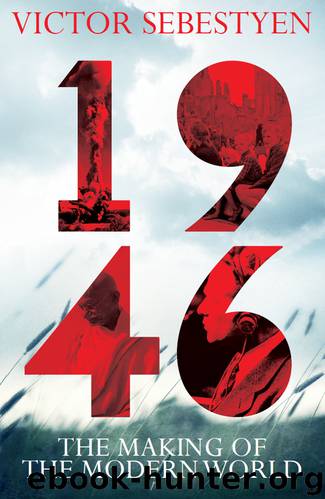1946 by Victor Sebestyen

Author:Victor Sebestyen
Language: eng
Format: epub
Publisher: Pan Macmillan UK
* The first person to propose, in print, the idea of separating India into two nations seems to have been the philosopher and great educator Sir Sayed Ahmed Khan, whose grandfather had served in the Mughal Court. A civil servant who founded numerous schools and colleges for Hindus, Muslims and Sikhs, he wrote in 1878: ‘Hindus and Muslims are two nations, even though they have drunk from the same well and breathed the air from the same city.’
18
Refugees
He had been Mayor of New York for three terms and, before that, a Congressman for a decade; his was one of the most recognised faces in America. But, out of office for three months and away from the limelight, Fiorello LaGuardia was not a contented man. At sixty-three, still full of energy, he was impatient for something significant to do. On 31 March President Truman named him director of the United Nations Relief and Rehabilitation Administration (UNRRA). Though he was hoping for something with more razzmatazz and a bigger profile at home, typically he grabbed the opportunity, telling his supporters that it was one of the most important jobs there could be. And so it was. The world had never seen a bigger refugee crisis, and LaGuardia was the man appointed to deal with it. Soon after accepting the post, ebullient as always, he explained to reporters who were wondering why he had taken the job: ‘Go to the library and ask for a book called the Bible, New Testament, and that will tell you what UNRRA is about.’1
UNRRA had been established well before the end of the war. Its aid workers set up camps and hospitals close behind the Allied lines where, as they tried to feed a desperate mass of people, they saw clearly the unprecedented scale of the crisis. They worked with dedication and skill and, considering the chaos and dislocation in post-war Europe, they saved a vast number of lives. Nobody knew for sure until long after the war was over, but UNRRA officials estimated that they would have to deal with around seven million refugees. By the time the camps closed early in 1949 it was considerably more than that – around eleven and a half million. And in the spring of 1946 there were still around four million refugees, or displaced persons (DPs), in Europe, the difference being that a displaced person had a home to go to (if it could be found), whereas a refugee was actually homeless. Inevitably, perhaps, the question was one of semantics or nuance: did a survivor of Auschwitz or a slave labourer whose village had been destroyed still have a home?
The DPs included Jews who had survived the concentration camps, prisoners of war from a dozen countries, and – by far the majority throughout 1946 – slave labourers whom the Nazis had transported to Germany. By the end of 1944 Germany’s entire effort, including all industrial output, was dependent on forced labour. Around 18 per cent of the workforce were, effectively, slaves.
Download
This site does not store any files on its server. We only index and link to content provided by other sites. Please contact the content providers to delete copyright contents if any and email us, we'll remove relevant links or contents immediately.
| Africa | Americas |
| Arctic & Antarctica | Asia |
| Australia & Oceania | Europe |
| Middle East | Russia |
| United States | World |
| Ancient Civilizations | Military |
| Historical Study & Educational Resources |
Red Famine: Stalin's War on Ukraine by Anne Applebaum(2854)
Chernobyl by Serhii Plokhy(2480)
Midnight in Chernobyl by Adam Higginbotham(2451)
The House of Government by Slezkine Yuri(2146)
Midnight in Chernobyl: The Untold Story of the World's Greatest Nuclear Disaster by Adam Higginbotham(2145)
Red Shambhala by Andrei Znamenski(2128)
The Gulag Archipelago (Vintage Classics) by Aleksandr Solzhenitsyn(2031)
All the Kremlin's Men by Mikhail Zygar(2005)
Red Notice by Bill Browder(1987)
From Cold War to Hot Peace by Michael McFaul(1981)
Putin's Labyrinth(1944)
From Russia with Lunch by David Smiedt(1871)
The Future Is History by Masha Gessen(1861)
A People's Tragedy by Orlando Figes(1809)
The Romanovs by Simon Sebag Montefiore(1765)
How to Tame a Fox (and Build a Dog): Visionary Scientists and a Siberian Tale of Jump-Started Evolution by Lee Alan Dugatkin & Lyudmila Trut(1717)
Putin's Labyrinth: Spies, Murder, and the Dark Heart of the New Russia(1699)
The Lost Spy by Andrew Meier(1678)
Art and Revolution by John Berger(1645)
